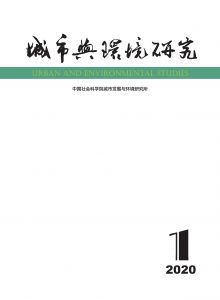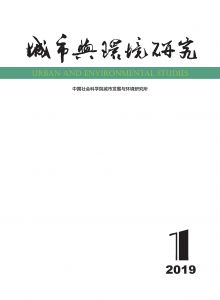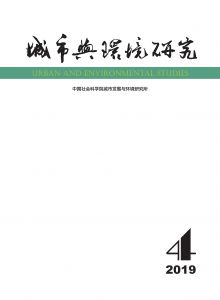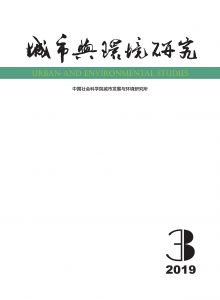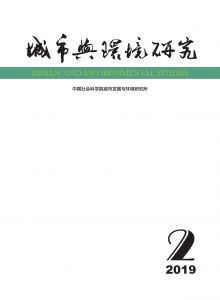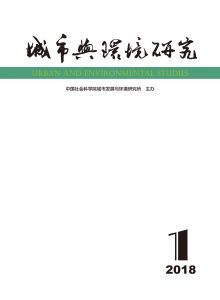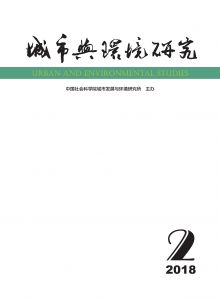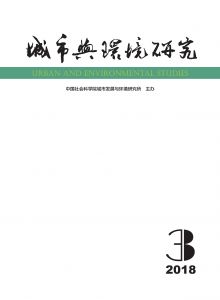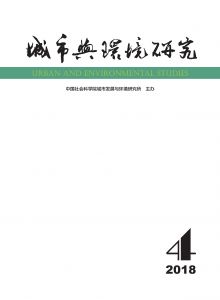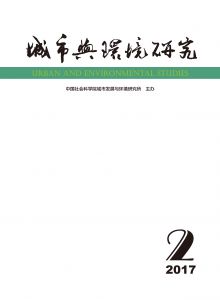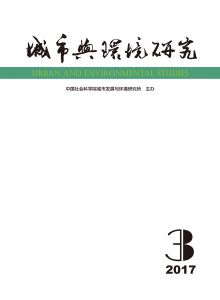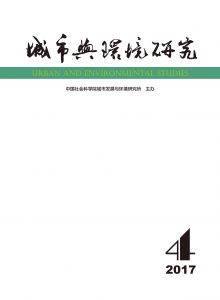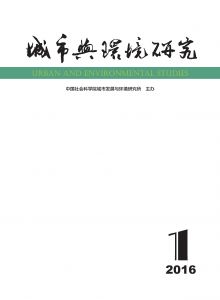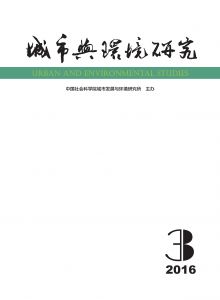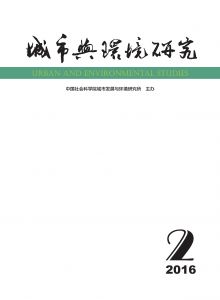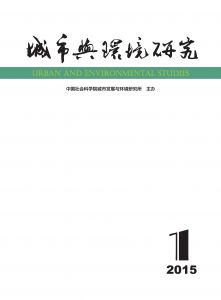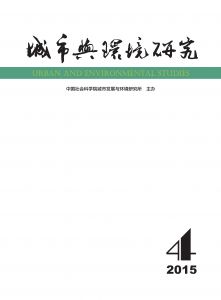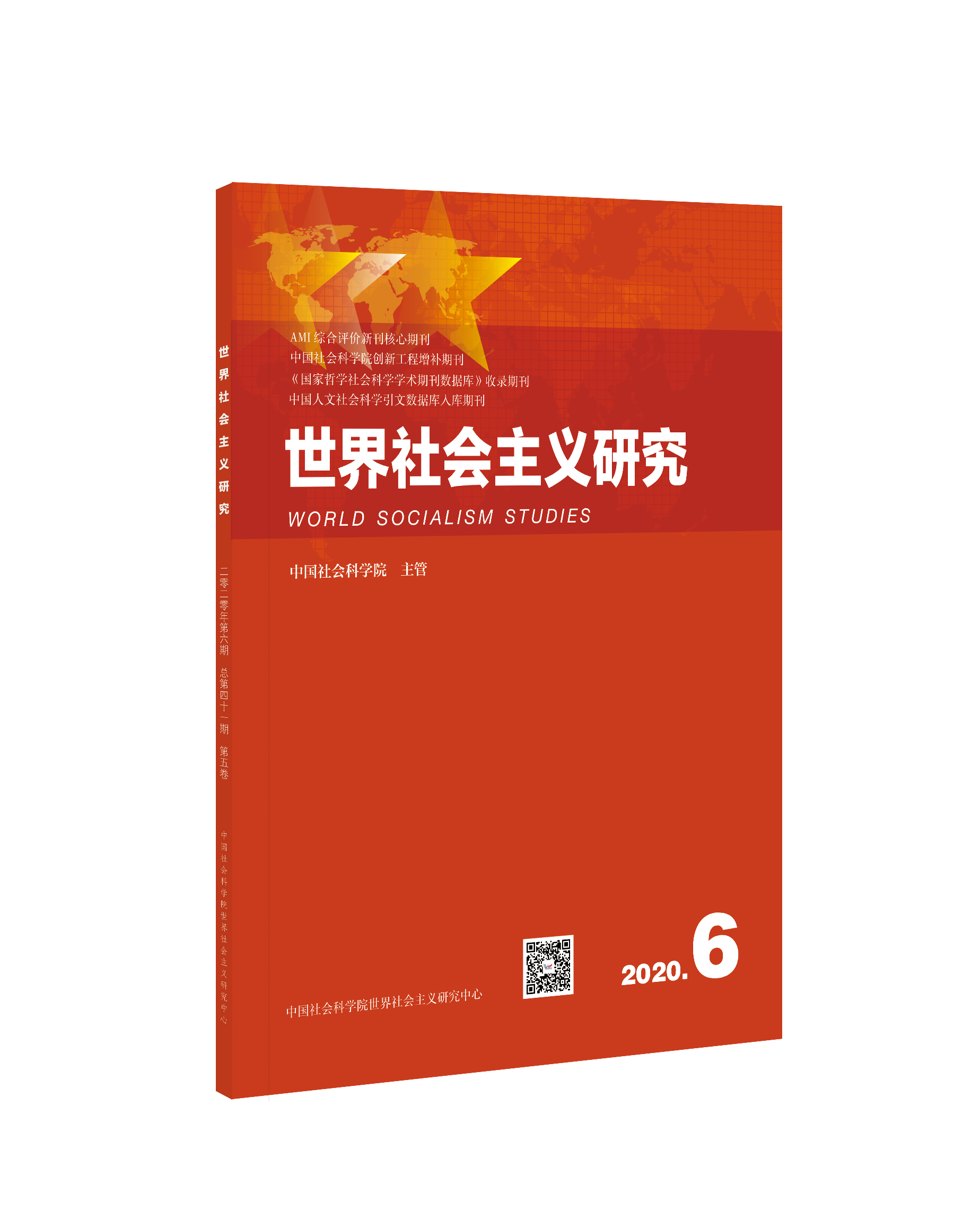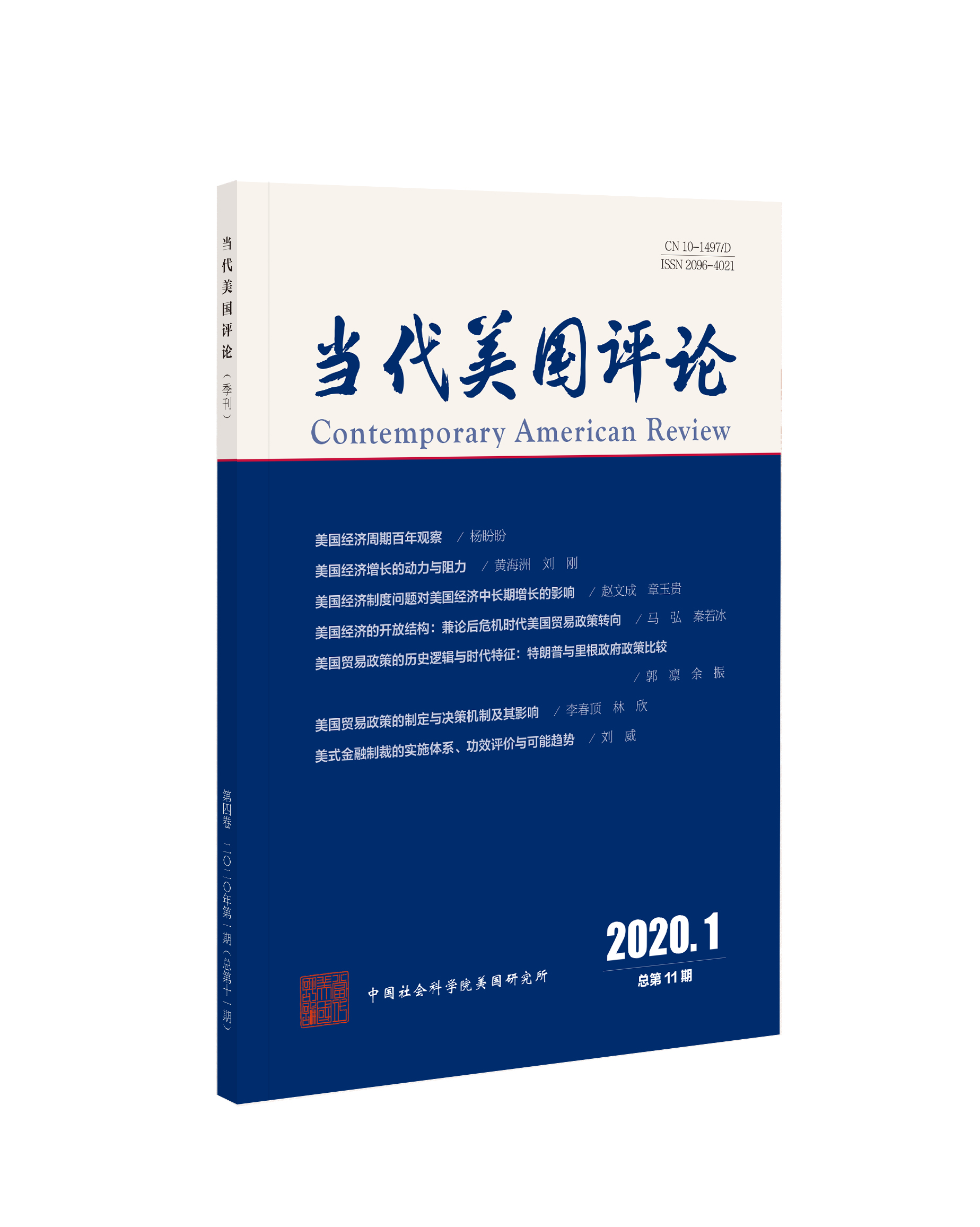最新期刊
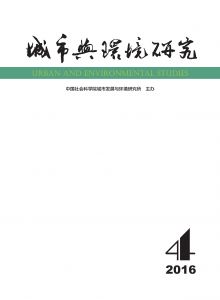
目录
过往期刊
参考文献
-
编委会
-
·学术论文·
-
区域大气污染联防联控是否取得了预期效果?
-
中国城市居民国内旅游需求的成本结构与邻居效应
-
内蒙古深化草原产权改革的进展与评述
-
气候适应型城市评价指标体系研究
-
“一带一路”背景下我国内陆节点城市功能优化研究
-
中国城市气象灾害非工程应对措施进展、问题与对策
-
-
·学术综述·
-
资源金融市场特征、运行机制及其影响
-
-
2016年总目录
-
《城市与环境研究》2017年征稿启事
-
投稿须知
-
版权页
按年份浏览:
- 全部
- 2020
- 2019
- 2018
- 2017
- 2016
- 2015
- 2014
[1][1]陈硕、陈婷(2014):《空气质量与公共健康:以火电厂二氧化硫排放为例》,《经济研究》第8期,第158~183页。
[2][2]刘华军、刘传明(2016):《京津冀地区城市间大气污染的非线性传导及其联动网络》,《中国人口科学》第2期,第84~95、128页。
[3][3]刘瑞明、赵仁杰(2015):《国家高新区推动了地区经济发展吗?—基于双重差分方法的验证》,《管理世界》第8期,第30~38页。
[4][4]马丽梅、张晓(2014):《中国雾霾污染的空间效应及经济、能源结构影响》,《中国工业经济》第4期,第19~31页。
[5][5](美)曼瑟尔·奥尔森(1995):《集体行动的逻辑》,陈郁、郭宇峰、李崇新译,上海:上海人民出版社。
[6][6]任婉侠、薛冰、张琳等(2013):《中国特大型城市空气污染指数的时空变化》,《生态学杂志》第10期,第2788~1796页。
[7][7]石庆玲、郭峰、陈诗一(2016):《雾霾治理中的“政治性蓝天”——来自中国地方“两会”的证据》,《中国工业经济》第5期,第40~56页。
[8][8]陶然、苏福兵、陆曦等(2010)《经济增长能够带来晋升吗?—对晋升锦标竞赛理论的逻辑挑战与省级实验重估》,《管理世界》第12期,第13~26页。
[9][9]万海远、李实(2013):《户籍歧视对城乡收入差距的影响》,《经济研究》第9期,第43~55页。
[10][10]汪伟全(2014):《空气污染的跨域合作治理研究——以北京地区为例》,《公共管理学报》第1期,第55~64、140页。
[11][11]王金南、宁淼、孙亚梅(2012):《区域大气污染联防联控的理论与方法分析》,《环境与可持续发展》第5期,第5~10页。
[12][12]王连伟(2012):《跨流域污染治理中集体行动困境问题的探讨——以奥尔森“集体行动的逻辑”为切入点》,《四川行政学院学报》第5期,第82~84页。
[13][13]王英、李令军、刘阳(2012):《京津冀与长三角区域大气NO2 污染特征》,《环境科学》第11期,第3685~3692页。
[14][14]王振波、方创琳、许光等(2015):《2014年中国城市PM2.5 浓度的时空变化规律》,《地理学报》第11期,第1720~1734页。
[15][15]薛文博、付飞、王金南等(2014):《中国PM2.5 跨区域传输特征数值模拟研究》,《中国环境科学》第6期,第1361~1368页。
[16][16]张庆丰、Crooks(2012):《迈向环境可持续的未来——中华人民共和国国家环境分析》,《中国财政经济出版社》,北京:中国财政经济出版社。
[17][17]张殷俊、陈曦、谢高地等(2015)《中国细颗粒物(PM2.5 )污染状况和空间分布》,《资源科学》第7期,第1339~1346页。
[18][18]周成虎、刘海江、欧阳(2008):《中国环境污染的区域联防方案》,《地球信息科学》第4期,第431~437页。
[19][19]周黎安(2007):《中国地方官员的晋升锦标赛模式研究》,《经济研究》第7期,第36~50页。
[20][20]周黎安、陈烨(2005):《中国农村税费改革的政策效果:基于双重差分模型的估计》,《经济研究》第8期,第44~53页。
[21][21]周晓艳、汪德华、李钧鹏(2011):《新型农村合作医疗对中国农村居民储蓄行为影响的实证分析》,《经济科学》第2期,第63~76页。
[22][22]Ashenfelter,O. and D. Card (1985),“Using the Longitudinal Structure of Earnings to Estimate the Effect of Training Programs”,The Review of Economics and Statistics ,67(4),pp.648-660.
[23][23]Aunan,K. and X. C. Pan (2004),“Exposure-Response Functions for Health Effects of Ambient Air Pollution Applicable for China-a Meta-Analysis”,Science of the Total Environment ,329(1-3),pp.3-16.
[24][24]Chen,Y.,A. Ebenstein and M. Greenstone,et al.(2013),“Evidence on the Impact of Sustained Exposure to Air Pollution on Life Expectancy from China’s Huai River Policy”,Proceedings of the National Academy of Sciences ,110(32),pp.12936-12941.
[25][25]Kan,H.,R. Chen and S. Tong (2012),“Ambient Air Pollution,Climate Change,and Pollution Health in China”,Environment International ,42,pp.10-19.
[26][26]Meyer,B.D.(1995),“Natural and Quasi-Experiments in Economics”,Journal of Business & Economic Statistics ,13(2),pp.151-161.
[27][27]Nehzat,M.(1999),“Winter Time PM2.5 and PM10 ,Source Apportionment at Sacramento,California”,Air & Waste Management Association ,49(9),pp.25-34.
[28][28]Pavcnik,N.(2002),“Tread Liberalization Exit and Productivity Improvement Evidence from Chilean Plants”,The Review of Economic Studies ,69(1),pp.245-276.
[29][29]Trefler,D.(2004),“The Long and Short of the Canada-US Free Tread Agreement”,The American Economic Review ,94(4),pp.870-895.
[30][30]Yang,G.,Y. Wang and Y. Zeng,et al.(2013),“Rapid Health Transition in China,1990-2010:Findings from the Global Burden of Disease Study 2010”,The Lancet ,381(9882),pp.1987-2015.
[31][31]陈刚强、李映辉(2011):《中国区域旅游规模的空间结构与变化》,《旅游学刊》第11期,第84~89页。
[32][32]林光平、龙志和、吴梅(2006):《中国地区经济σ-收敛的空间计量实证分析》,《数量经济技术经济研究》第4期,第14~21页。
[33][33]宋咏梅、孙根年(2006):《中国城市居民旅游购买能力统计分析》,《城市问题》第2期,第54~58页。
[34][34]孙睿君、钟笑寒(2005):《运用旅行费用模型估计典型消费者的旅游需求及其收益:对中国的实证研究》,《统计研究》第12期,第34~39页。
[35][35]翁钢民、徐晓娜、尚雪梅(2007):《我国城市居民国内旅游需求影响因素分析》,《城市问题》第4期,第31~35页。
[36][36]吴玉鸣(2010):《考虑空间效应的中国省域旅游产业弹性估计》,《旅游学刊》第8期,第18~25页。
[37][37]向艺、郑林、王成璋(2012):《旅游经济增长因素的空间计量研究》,《经济地理》第6期,第162~166页.
[38][38]谢慧明、沈满洪、李中海(2014):《中国城市居民旅游需求函数的实证研究》,《旅游学刊》第9期,第24~34页。
[39][39]徐伟、戴其文、把多勋等(2010):《中国农村居民一日游现状与出游目的空间自相关分析》,《旅游学刊》第10期,第43~49页。
[40][40]Case,A.C.,H.S.Rosen and J.R.Hines (1993),“Budget Spillovers and Fiscal Policy Interdependence:Evidence from the States”,Journal of Public Economics ,52(3),pp.285-307.
[41][41]de la Mata,T. and C.Llano-Verduras (2012),“Spatial Pattern and Domestic Tourism:An Econometric Analysis Using Inter-Regional Monetary Flows by Type of Journey”,Papers in Regional Science ,91(2),pp.437-470.
[42][42]De Mello,M.,A.Pack and M.T.Sinclair (1999),“UK Demand for Tourism in Its Southern Neighbours”,TTRI Discussion Paper 99/2,Christel DeHaan Tourism and Travel Research Institute,University of Nottingham.
[43][43]Deng,M. and G.Athanasopoulos (2011),“Modelling Australian Domestic and International Inbound Travel:A Spatial-Temporal Approach”,Tourism Management ,32(5),pp.1075-1084.
[44][44]Elhorst,J.P.(2014),“Spatial Panel Data Models”,Spatial Econometrics ,Springer,pp.37-93.
[45][45]Goh,C.(2012),“Exploring Impact of Climate on Tourism Demand”,Annals of Tourism Research ,39(4),pp.1859-1883.
[46][46]Gooroochurn,N. and A.Hanley (2005),“Spillover Effects in Long-Haul Visitors Between Two Regions”,Regional Studie s,39(6),pp.727-738.
[47][47]Li,G.,H.Y.Song and S.F.Witt (2005),“Recent Developments in Econometric Modeling and Forecasting”,Journal of Travel Research ,44(1),pp.82-99.
[48][48]Lim,C.(1997),“Review of International Tourism Demand Models”,Annals of Tourism Research ,24(4),pp.835-849.
[49][49]Marrocu,E. and R.Paci (2013),“Different Tourists to Different Destinations.Evidence from Spatial Interaction Models”,Tourism Management ,39(39),pp.71-83.
[50][50]McConnell,K.E.(1992),“On-Site Time in the Demand for Recreation”,American Journal of Agricultural Economics ,74(4),pp.918-925.
[51][51]Menon,M.,F.Perali and M.Veronesi (2014),“Recovering Individual Preferences for Non-Market Goods:A Collective Travel-Cost Model”,American Journal of Agricultural Economics ,96(2),pp.438-457.
[52][52]Patuelli,R.,M.Mussoni and G.Candela (2013),“The Effects of World Heritage Sites on Domestic Tourism:A Spatial Interaction Model for Italy”,Journal of Geographical Systems ,15(3),pp.369-402.
[53][53]Pearce,D.G.(1987),“Spatial Patterns of Package Tourism in Europe”,Annals of Tourism Research ,14(2),pp.183-201.
[54][54]Song,H.Y.,L.Dwyer and G.Li,et al.(2012),“Tourism Economics Research:A Review and Assessment”,Annals of Tourism Research ,39(3),pp.1653-1682.
[55][55]Song,H.Y. and G.Li (2008),“Tourism Demand Modelling and Forecasting—A Review of Recent Research”,Tourism Management ,29(2),pp.203-220.
[56][56]Tang,Z.(2015),“An Integrated Approach to Evaluating the Coupling Coordination Between Tourism and the Environment”,Tourism Management ,46,pp.11-19.
[57][57]Yang,Y. and K.K.Wong (2013),“Spatial Distribution of Tourist Flows to China’s Cities”,Tourism Geographies ,15(2),pp.338-363.
[58][58](美)埃莉诺·奥斯特罗姆(2000):《公共事务的治理之道——集体行动制度的演进》,余逊达、陈旭东译,上海:上海三联书店。
[59][59]敖仁其(2014):《对合作放牧制度的实证与理论思考》,《内蒙古社会科学(汉文版)》第6期,第188~191页。
[60][60]敖仁其、达林太(2005):《草原牧区可持续发展问题研究》,《内蒙古财经学院学报》第2期,第26~29页。
[61][61]达林太、郑易生(2010):《牧区与市场:牧民经济学》,北京:社会科学文献出版社。
[62][62]达林太、郑易生(2014):《草地生态环境安全的重要信号——内蒙古天然草地过牧问题的讨论》,张晓等著:《中国环境安全评论(第一卷)》,北京:金城出版社、社会科学文献出版社,第124~125页。
[63][63]盖志毅(2008):《制度视域下的草原生态环境保护》,沈阳:辽宁民族出版社。
[64][64]何欣、牛建明、郭晓川等(2013):《中国草原牧区制度管理研究进展》,《中国草地学报》第1期,第102~109页。
[65][65]厉以宁、章铮(1995):《环境经济学》,北京:中国计划出版社,第154~159页。
[66][66]马林、王亮、张扬等(2015):《中国草原牧区可持续发展论》,北京:民族出版社。
[67][67]内蒙古党委政策研究室、内蒙古自治区农业委员会(1987):《内蒙古畜牧业文献资料选编(第七卷)》第7卷,呼和浩特:内蒙古党委政策研究室、内蒙古自治区农业委员会,第253~254、363~367页。
[68][68]内蒙古自治区统计局、内蒙古自治区人民政府调研室(1987):《光辉的四十年》,呼和浩特:内蒙古人民出版社,第197页。
[69][69]曲云鹤、余成群、吴俊喜等(2014):《发达国家草原管理模型的发展趋势》,《中国草地学报》第4期,第110~115页。
[70][70]任继周(2004):《草地农业生态系统通论》,合肥:安徽教育出版社,第529~534页。
[71][71]王建革(2006):《农牧生态与传统蒙古社会》,济南:山东人民出版社。
[72][72]王轲、周立(2013):《对内蒙古草原草场治理问题的思考——基于“公共池塘资源”理论》,《中国物价》3期,第85~91页。
[73][73]王晓毅(2009):《从承包到“再集中”——中国北方草原环境保护政策分析》,《中国农村观察》第3期,第36~46、95页。
[74][74]王晓毅(2016):《市场化、干旱与草原保护政策对牧民生计的影响——2000~2010年内蒙古牧区的经验分析》,《中国农村观察》第1期,第86~93页。
[75][75]王晓毅、张倩、荀丽丽(2010):《非平衡、共有和地方性——草原管理的新思考》,北京:中国社会出版社,第4~17页。
[76][76]徐建英、刘新新、冯琳等(2015):《生态补偿权衡关系研究进展》,《生态学报》第20期,第6901~6907页。
[77][77]杨理(2011):《基于市场经济的草权制度改革研究》,《农业经济问题》第10期,第102~109页。
[78][78](澳大利亚)约翰·朗沃斯、格里格·威廉目森(1995):《中国的牧区》,丁文广等译,兰州:甘肃文化出版社,第390~392页。
[79][79]曾贤刚、唐宽昊、卢熠蕾(2014):《“围栏效应”:产权分割与草原生态系统的完整性》,《中国人口·资源与环境》第2期,第88~93页。
[80][80]张树安、刘夏波、王昕(2007):《草原生态系统可持续发展的经济学模型新探》,《经济问题探索》第8期,第87~92页。
[81][81]赵萌莉、许志信(2000):《内蒙古草地资源合理利用与草地畜牧业持续发展》,《资源科学》第1期,第73~76页。
[82][82]赵萌莉、郑淑华、王忠武等(2014):《草地可持续性管理》,北京:科学出版社。
[83][83]周立、董小瑜(2013):《“三牧”问题的制度逻辑——中国草场管理与产权制度变迁研究》,《中国农业大学学报(社会科学版)》第2期,第94~107页。
[84][84]Agrawal,A.(2001),“Common Property Institutions and Sustainable Governance of Resources”,World Development ,29(10),pp.1649-1672.
[85][85]Clements,F. E. (1916),Plant Succession:An Analysis of the Development of Vegetation ,Washington,D.C.:Carnegie Institution.
[86][86]Demsetz,H.(1967),“Toward a Theory of Property Rights”,American Economic Review ,57(2),pp.347-359.
[87][87]Ellis,J. E. and D. M. Swift(1988),“Stability of African Pastoral Ecosystems:Alternate Paradigms and Implications for Development”,Journal of Range Management ,41(6),pp.450-459.
[88][88]Hardin,G. (1968),“The Tragedy of the Commons”,Science ,162(3859),pp.1243-1248.
[89][89]Li,W. J.,S. H. Ali and Q. Zhang(2007),“Property Rights and Grassland Degradation:A Study of the Xilingol Pasture,Inner Mongolia,China”,Journal of Environmental Management ,85(2),pp.461-470.
[90][90]杜栋、庞庆华、吴炎(2008):《现代综合评价方法与案例精选》,北京:清华大学出版社。
[91][91]杰克·埃亨(2015):《从安全防御到安全无忧:新城市世界的可持续性和韧性》,秦越、刘海龙译,《国际城市规划》第2期,第4~7页。
[92][92]欧盟环境署(2014):《欧盟城市适应气候的机遇和挑战》,张明顺、冯利利、黎学琴等译,北京:中国环境出版社。
[93][93]潘家华、郑艳(2010):《适应气候变化的分析框架及政策涵义》,《中国人口·资源与环境》第10期,第1~5页。
[94][94]秦大河、张建云、闪淳昌等(2015):《中国极端天气气候事件和灾害风险管理与适应国家评估报告》,北京:科学出版社。
[95][95]王祥荣、谢玉静、徐艺扬等(2016):《气候变化与韧性城市发展对策研究》,《上海城市规划》第1期,第26~31页。
[96][96]谢欣露、郑艳(2014):《城市居民气候灾害风险及适应性认知分析——基于上海社会调查问卷》,《城市与环境研究》第1期,第80~91页。
[97][97]徐江、邵亦文(2015):《韧性城市:应对城市危机的新思路》,《国际城市规划》第2期,第1~3页。
[98][98]郑艳(2012):《适应型城市:将适应气候变化与气候风险管理纳入城市规划》,《城市发展研究》第1期,第47~51页。
[99][99]郑艳(2013):《推动城市适应规划,构建韧性城市——发达国家的案例与启示》,《世界环境》第6期,第50~53页。
[100][100]郑艳、史巍娜(2016):《〈城市适应气候变化行动方案〉的解读及实施》,王伟光、郑国光编:《应对气候变化报告(2016):〈巴黎协定〉重在落实》,北京:社会科学文献出版社,第177~188页.
[101][101]Adger,W. N.(2006),“Vulnerability”,Global Environmental Change ,16 (3),pp. 268-281.
[102][102]Bicknell,J.,D. Dodman and D. Satterthwait(2009),Adapting Cities to Climate Change:Understanding and Addressing the Development Challenges ,London:Earthscan.
[103][103]Cutter,S. L.,B. J. Boruff and W. L. Shirley(2003),“Social Vulnerability to Environmental Hazards”,Social Science Quarterly ,84(2),pp.242-261.
[104][104]King,D.,D. Schrag and D. Zhou,et al.(2015),“Climate Change:A Risk Assessment”,http://www.csap.cam.ac.uk/projects/climate-change-risk-assessment/[2016-04-15].
[105][105]IPCC(2007),“Climate Change 2007:Impacts,Adaptation and Vulnerability”,in M.L. Parry,O.F. Canziani and J.P. Palutikof(eds.),Contribution of Working Group II to the Fourth Assessment Report of the Intergovernmental Panel on Climate Change ,Cambridge:Cambridge University Press,pp.976.
[106][106]IPCC(2012),Managing the Risks of Extreme Events and Disasters to Advance Climate Change Adaptation (SREX ),Cambridge:Cambridge University Press.
[107][107]Lückenkötter,J.,C. Lindner and S. Greiving (2013),“Methodology for an Integrated Climate Change Vulnerability Assessment”,in Schmidt-Thomé,P. and S. Greiving(eds.),European Climate Vulnerabilities and Adaptation:A Spatial Planning Perspective ,Chichester:John Wiley & Sons,pp.5-15.
[108][108]Pelling,M. and C. High (2005),“Understanding Adaptation:What Can Social Capital Offer Assessments of Adaptive Capacity?”,Global Environmental Change ,15(4),pp.308-319.
[109][109]Schmidt-Thomé,P. and S. Greiving(2013),“Introducing the Pan-European Approach to Integration on Climate Change Impacts and Vulnerabilities into Regional Development Perspectives”,in Schmidt-Thomé,P. and S. Greiving(eds.),European Climate Vulnerabilities and Adaptation:A Spatial Planning Perspective ,Chichester:John Wiley & Sons,pp.1-4.
[110][110]Preston,B. J.,E. J. Yuen and R. M. Westaway(2011),“Putting Vulnerability to Climate Change on the Map:A Review of Approaches,Benefits,and Risks”,Sustainability Science ,6 (2),pp.177-202.
[111][111]UNISDR(2015),The Human Cost of Weather-Related Disasters 1995-2015,http://www.unisdr.org/2015/docs/climatechange/COP21_WeatherDisastersReport_2015_FINAL.pdf[2016-04-15].
[112][112]安晓明(2015):《全面深度融入“一带一路”战略》,《河南日报》6月3日。
[113][113]安晓明(2016):《我国“一带一路”研究脉络与进展》,《区域经济评论》第2期,第77~88页。
[114][114]杜敏敏、张仲伍、丁立等(2016):《“一带一路”中国段节点城市竞争力空间分布》,《山西师范大学学报(自然科学版)》第4期,第103~108页。
[115][115]高丽英(2016):《“一带一路”战略下的侯马城市发展对策》,《城市发展研究》第3期,第72~75页。
[116][116]高友才、汤凯(2016):《“丝绸之路经济带”节点城市竞争力测评及政策建议》,《经济学家》第5期,第59~67页。
[117][117]何枭吟(2015):《“一带一路”建设中内陆节点城市临空经济发展建议》,《经济纵横》第9期,第13~16页。
[118][118]李庚香、王喜成(2014):《新“丝绸之路经济带”的战略特点与河南的积极融入》,《区域经济评论》第6期,第44~52页。
[119][119]李琪、朱楠(2016):《“一带一路”战略下西安开放开发新高地规划建设策略》,《规划师》第2期,第31~37页。
[120][120]刘刚(2016):《站位城市国际化提升郑州影响力》,《河南日报》9月21日。
[121][121]刘艳、曹伟、王晏晏(2016):《“一带一路”内陆节点城市物流业竞争力评价——基于熵权TOPSIS组合模型》,《技术经济》第11期,第68~72、104页。
[122][122]刘泽照、黄杰、陈名(2015):《丝绸之路经济带(中国段)节点城市空间差异及发展布局》,《重庆理工大学学报(社会科学)》第5期,第47~54、100页。
[123][123]卢福永、王亚星、蒙双(2016):《“一带一路”节点城市开放发展战略研究——以银川市为例》,《中国物价》第5期,第80~82页。
[124][124]彭震伟(2016):《“一带一路”战略对中国城市发展的影响及城市规划应对》,《规划师》第2期,第11~16页。
[125][125]孙志刚(1999):《论城市功能的叠加性发展规律》,《经济评论》第1期,第81~85页。
[126][126]王建国(2016):《推进中原城市群交通一体化发展》,《河南日报》9月23日。
[127][127]王文铭、高艳艳(2016):《“一带一路”内陆节点城市物流产业竞争力评价及建议》,《商业经济研究》第 4期,第92~93页。
[128][128]王杨堃(2015):《中欧班列发展现状、问题及建议》,《综合运输》第S1期,第70~75、89页。
[129][129]Djankov,S.,and S. Miner(2016),China’s Belt and Road Initiative:Motives,Scope,and Challenges ,Washington,D.C.:Peterson Institute for International Economics.
[130][130]Lynch,K.(1960),The Image of the City ,Cambridge:MIT Press.
[131][131]陈桂香(2007):《城市生命线系统的非工程减灾措施研究》,上海:同济大学博士学位论文。
[132][132]黄雁飞(2007):《我国重大气象灾害应急管理体系的研究》,上海:上海交通大学硕士学位论文。
[133][133]姜海如(2007):《气象灾害的危害层次及其防御抗救过程研究》,《暴雨灾害》第3期,第193~198页。
[134][134]金磊(2013):《近十年中国城市防灾减灾的成就与思考》,《中国减灾》第2期,第38~40页。
[135][135]李垚(2013):《工程措施与非工程措施在水污染治理中的作用研究》,陕西:西北农林科技大学硕士论文。
[136][136]刘国纬(2003):《论防洪减灾非工程措施的定义与分类》,《水科学进展》第1期,第98~103页。
[137][137]潘家华、魏后凯(2014):《中国城市发展报告(2014)》,北京:社会科学文献出版社。
[138][138]彭莹辉、刘立成、叶梦姝(2013):《构建应对气候变化的科学传播体系》,《阅江学刊》第3期,第35~38页。
[139][139]彭莹辉、刘立成、叶梦姝等(2014):《气象信息传播参与社会管理的路径分析》,《阅江学刊》第6期,第28~33页。
[140][140]秦大河(2008):《城市化与加强城市化气象灾害管理》,http://www.mmzy.org.cn[2016-05-26]。
[141][141]秦大河(2015):《中国极端天气气候事件和灾害风险管理与适应国家评估报告》,北京:科学出版社。
[142][142]世界银行(2010):《世界发展报告(2010):发展与气候变化》,北京:清华大学出版社。
[143][143]史培军(2005):《四论灾害系统研究的理论与实践》,《自然灾害学报》第6期,第1~7页。
[144][144]史培军、唐迪、方华伟等(2008):《从应对2008年低温雨雪冰冻巨灾看我国巨灾风险防范对策》,《保险研究》第5期,第9、12页。
[145][145]谭徐明(1998):《减灾行为社会化是防洪减灾战略转移的必然方向——美国防洪减灾战略的转移和演进》,《自然灾害学报》第3期,第39~44页。
[146][146]王伟光、郑国光、潘家华等(2014):《应对气候变化报告(2014)》,北京:社会科学文献出版社。
[147][147]王迎春、郑大玮、李青春(2009):《城市气象灾害》,北京:气象出版社。
[148][148]吴恒安(2002):《关于非工程防洪措施》,《水利科技与经济》第3期,第123~125页。
[149][149]谢欣露、辛源(2014):《城市气候脆弱性分析与非工程性应对措施——以北京“7·21”特大暴雨事件为例》,载于中国气象局发展研究中心编著(2014):《气象软科学(2013)》,北京:气象出版社,第154~156、158~160页。
[150][150]辛吉武、许向春(2007):《我国的主要气象灾害及防御对策》,《灾害学》第3期,第85~89页。
[151][151]翟永梅、韩新、沈祖炎等(2002):《国内外大城市防灾减灾管理模式的比较研究》,《灾害学》第1期,第62~69页。
[152][152]张有、汪涛、黄龙全(2010):《非工程防洪措施在防洪中的重要性》,《黑龙江水利科技》第5期,第185页。
[153][153]郑丁宁、郭文龙(2013):《从城市内涝看应急管理——基于北京721内涝的思考》,《中国外资》第7期,第246页。
[154][154]郑国光(2013):《气象灾害如何防》,《求是》第5期,第47~48页。
[155][155]周焱、董基源(2002):《浅谈加强非工程措施建设 构建完整的防洪减灾体系》,《治淮》第11期,第17~18页。
[156][156]中国气象局发展研究中心气象发展报告编写组(2015):《中国气象发展报告2015》,北京:气象出版社。
[157][157]中国气象局发展研究中心气象发展报告编写组(2016):《中国气象发展报告2016》,北京:气象出版社。
[158][158]Cui,X.Q,H.R. Jiang and Y.H. Peng(2014),“Study on Non-Engineering Countermeasures of Meteorological Disaster Prevention in Large Cities”,Meteorological and Environmental Research ,5 (9),pp.38-42.
[159][159]付俊文、赵红(2007):《控制能源金融风险的对策研究》,《青海社会科学》第2期,第62~67页。
[160][160]李丽红(2015):《中国能源金融市场风险预警——基于PCA&ARMA模型的研究》,《经济问题》第2期,第52~57页。
[161][161]李忠民、邹明东(2009):《能源金融问题研究评述》,《经济学动态》第10期,第101~105页。
[162][162]林伯强、黄光晓(2011):《能源金融》,北京:清华大学出版社。
[163][163]刘贵生(2007):《金融支持西北能源产业可持续发展的战略选择》,《中国金融》第13期,第32~33页。
[164][164]王淑贞、魏华、贺靖峰(2011):《基于AR和模糊综合评价的中国能源风险预警研究》,《上海管理科学》第3期,第1~4页。
[165][165]王雪磊(2012):《后危机时代碳金融市场发展困境与中国策略》,《国际金融研究》第2期,第77~84页。
[166][166]尹力博、韩立岩(2014):《大宗商品战略配置——基于国民效用与风险对冲的视角》,《管理世界》第7期,第39~51页。
[167][167]Aastveit,K.A. (2009),Modeling Transmission of Oil Price Shocks and Monetary Policy Shocks in a Data Rich Environment ,mimeo.
[168][168]Danielsen,A. L. and E.B. Selby (1980),“World Oil Price Increases:Sources and Solution”,Energy Journal ,1(4),pp.59-74.
[169][169]Backus,D.K. and M.J. Crucini (2000),“Oil Prices and the Terms of Trade”,Journal of International Economics ,50(1),pp. 185-213.
[170][170]Barnett,A. and R. Straub (2008),“What Drives U.S. Current Account Fluctuations?”,ECB Working Paper ,No. 959,http://citeseerx.ist.psu.edu/viewdoc/download;jsessionid=DEE26928B72D06 AF4F547127 EAFD12A0?doi=10.1.1.165.2890&rep=rep1&type=pdf[2016-04-06].
[171][171]Barsky,R.B. and L. Kilian (2004),“Oil and the Macroeconomy since the 1970s”,Journal of Economic Perspectives ,18(4),pp. 115-134.
[172][172]Baumeister,C. and G. Peersman (2009),Sources of the Volatility Puzzle in the Crude Oil Market ,mimeo,Ghent University.
[173][173]Berkowitz,J. (1999),A Coherent Framework for Stress Testing ,Board of Governors of the Federal Reserve.
[174][174]Bernanke,B.S.,M. Gertler and M. Watson,et al. (1997),“Systematic Monetary Policy and the Effects of Oil Price Shocks”,Brookings Papers on Economic Activity ,1997(1),pp. 91-157.
[175][175]Berument,H. and H. Taşçı (2002),“Inflationary Effect of Crude Oil Prices in Turkey”,Physica A:Statistical Mechanics and its Applications ,316(1-4),pp. 568-580.
[176][176]Blanchard,O. and J. Galí (2007a),“Real Wage Rigidities and the New-Keynesian Model”,Journal of Money,Credit,and Banking ,39(s1),pp.35-65.
[177][177]Blanchard,O. J. and J. Galí (2007b),“The Macroeconomic Effects of Oil Price Shocks:Why are the 2000s so Different from the 1970s?”,NBER Working Paper ,No.13368,http://www.nber.org/chapters/hc0517.pdf[2016-04-20].
[178][178]Bodenstein,M.,C.J. Erceg and L.Guerrieri (2011),“Oil Shocks and External Adjustment”,Journal of International Economics ,83 (2),pp.168-184.
[179][179]Brown,S.P.A. and M.K. Yücel (2002),“Energy Prices and Aggregate Economic Activity:An Interpretative Survey”,Quarterly Review of Economics and Finance ,42(2),pp.193-208.
[180][180]Buetzer,S.,M.M. Habib and L. Stracca (2012),“Global Exchange Rate Configurations Do Oil Shocks Matters?”,European Central Bank Working Paper ,No.1442,http://sdw.central.banktunnel.eu/pub/pdf/scpwps/ecbwp1442.pdf?c73d8c3cae0a98cd9c72b4ed9de507bd[2016-05-10]。
[181][181]Cashin,P.,L.F. Céspedes and R. Sahay (2004),“Commodity Currencies and the Real Exchange Rate”,Journal of Development Economics ,75(1),pp. 239-268.
[182][182]Chen,Y-C.,K.S. Rogoff and B. Rossi (2010),“Can Exchange Rates Forecast Commodity Prices?” Quarterly Journal of Economics ,125(3),pp. 1145-1194.
[183][183]Chinn,M.D.,M. LeBlanc and O. Coibon (2005),“The Predictive Content of Energy Futures:An Update on Petroleum,Natural Gas,Heating Oil and Gasoline”,NBER Working Paper ,No. 11033,http://www.nber.org/papers/w11033.pdf[2016-4-10].
[184][184]Chincarini,L.B. (2008),“A Case Study on Risk Management:Lessons from the Collapse of Amaranth Advisors LLC”,Journal of Applied Finance ,18(1),pp. 152-174.
[185][185]Cifarellia,G. and G. Paladino (2010),“Oil Price Dynamics and Speculation:A Multivariate Financial Approach”,Energy Economics ,32(2),pp.363-372.
[186][186]Commodity Futures Trading Commission (2006),Report on a Study of Managed Money Traders’ Participation in Futures and Option-on-futures Markets ,prepared by the Market Surveillance Section,Division of Economic Analysis.
[187][187]Corden,W. M. and J.P. Neary (1982),“Booming Sector and De-industrialization in a Small Open Economy”,Economic Journal ,92(368),pp. 825-848.
[188][188]Coudert,V.,C. Couharde and V. Mignon (2011),“Does Euro or Dollar Pegging Impact the Real Exchange Rate?The Case of Oil and Commodity Currencies”,World Economy ,34(9),pp. 1557-1592.
[189][189]Derrick,A. (1998),“Financing Mechanisms for Renewable Energy”,Renewable Energy ,15(1-4),pp.211-214.
[190][190]De Gregorio,J. and H.C. Wolf (1994),“Terms of Trade,Productivity and the Real Exchange Rate”,NBER Working Papers ,No. 4807,http://www.nber.org/papers/w4807.pdf [2016-04-25].
[191][191]De Gregorio,J.,O. Landerrechte and C. Neilson (2007),“Another Pass-Through Bites the Dust?Oil Prices and Inflation”,Central Bank of Chile Working Paper ,No.417,http://citeseerx.ist.psu.edu/viewdoc/download:jsessionid=7D003A7B6699DEB97B810BBDDFDA6E4F?doi=10.1.1.485.9855 & rep=rep1&type=pdf[2016-07-05].
[192][192]Domanski,D. and A. Heath (2007),“Financial Investors and Commodity Markets”,BIS Quarterly Review ,3,pp.12-16.
[193][193]Dowd,K. (1998),Beyond Value at Risk:The New Science of Risk Management ,John Wiley & Sons.
[194][194]Erb,C.B. and C.R. Harvey (2006),“the Strategic and Tactical Value of Commodity Futures”,Financial Analysts Journal ,62(2),pp. 69-97.
[195][195]Financial Stability Board (2012),OTC Derivatives Market Reforms:Third Progress Report on Implementation .
[196][196]Frankel,J.A. (1986),“Expectations and Commodity Price Dynamics:the Overshooting Model”,American Journal of Agricultural Economics ,68(2),pp.344-348.
[197][197]Frankel,J.A. (2006),“The Effect of Monetary Policy on Real Commodity Prices”,NBER Working Paper ,No.12713,http://www.nber.org/papers/w12713.pdf [2016-07-16].
[198][198]Frankel,J.A. and A.K. Rose (2010),“Determinants of Agricultural and Mineral Commodity Prices”,Working Paper Series RWP 10-038,https://dash.harvard.edu/bitstream/handle/1/4450126/Frankel_Determinant sof.pdf?sequence=1[2016-05-25].
[199][199]Ghironi,F.,J. Lee and A. Rebucci (2007),“The Valuation Channel of External Adjustment”,NBER Working Paper ,No. 12937,https://core.ac.uk/download/pdf/6286647.pdf [2016-02-20].
[200][200]Golub,S. S. (1983),“Oil Prices and Exchange Rates”,Economic Journal ,93(371),pp. 576-593.
[201][201]Gourinchas,P. and H. Rey (2007),“International Financial Adjustment”,Journal of Political Economy ,115 (4),pp. 665-703.
[202][202]Greely,D. and J. Currie (2008),Speculators,Index Investors,and Commodity Price ,Goldman Sachs.
[203][203]Habib,M. and M. Kalamova (2007),“Are There Oil Currencies?The Real Exchange Rate of Oil Exporting Countries ”,ECB Working Paper ,No. 839,https://core.ac.uk/download/pdf/6387551.pdf [2016-04-13].
[204][204]Haigh,M.S.,J. Hranaiova and J.A. Overdahl (2005),“Price Dynamics,Price Discovery and Large Futures Trader Interactions in the Energy Complex”,US Commodity Futures Trading Commission Working Paper ,http://commitmentsoftraders.org/wp-content/uploads/Static/Perm/HaighHranaiovaOverdahl2005. pdf[2016-06-20].
[205][205]Hamilton,J.D.(1983),“Oil and the Macroeconomy since World War II”,Journal of Political Economy ,91(2),pp. 228-248.
[206][206]Hamilton,J.D.(1996),“This is What Happened to the Oil Price-Macroeconomy Relationship”,Journal of Monetary Economics ,38(2),pp. 215-220.
[207][207]Hamilton,J.D.(2003),“What is an Oil Shock?” Journal of Econometrics ,113(2),pp. 363-98.
[208][208]Hamilton,J.D.(2009),“The Causes and Consequences of the Oil Shock of 2007-08”,NBER Working Paper ,No. 15002,http://www.gatewayhouse.in/wp-content/uploads/2013/11/Hamilton-2009-Causes-and-Consequences-of-the-Oil-Shock-of-2007-2008.pdf[2016-08-14].
[209][209]Hammoudeh,S.,H. Li and B. Jeon (2003),“Causality and Volatility Spillovers using Petroleum Prices of WTI,Gasoline,and Heating Oil in Different Locations”,North American Journal of Economics and Finance ,14(1),pp.89-114.
[210][210]Hammoudeh,S. and H. Li (2004),“the Impact of the Asian Crisis on the Behavior of US and International Petroleum Prices”,Energy Economics ,26(1),pp.135-160.
[211][211]Hooker,M.A. (2002),“Are Oil Shocks Inflationary?Asymmetric and Nonlinear Specifications versus Changes in Regime?”,Journal of Money,Credit and Banking ,34(2),pp. 540-561.
[212][212]Hotelling,H. (1931),“the Economics of Exhaustible Resources”,Journal of Political Economy ,39(2),pp. 137-175.
[213][213]James,T. (2008),Energy Markets:Price Risk Management and Trading ,John Wiley & Sons.
[214][214]Kilian,L. (2007),“A Comparison of the Effects of Exogenous Oil Supply Shocks on Output and Inflation in the G7 Countries”,CEPR Working Paper ,http://www-personal.umich.edu/~lkilian/kilianjeearev.pdf[2016-05-12].
[215][215]Kilian,L. (2008),“Exogenous Oil Supply Shocks:How Big They Are and How Much Do They Matter for the U.S. Economy?”,Review of Economics and Statistics ,90(2),pp. 216-240.
[216][216]Kilian,L. (2009),“Not All Oil Shocks Are Alike:Disentangling Demand and Supply Shocks in the Crude Oil Market”,American Economic Review ,99(3),pp. 1053-1069.
[217][217]Klaus R. (1999),“Finance and Banking for Wind Energy”,Renewable Energy ,16(1-4),pp.855-857.
[218][218]Krugman,P. (1980),“Oil and the Dollar”,NBER Working Papers ,No. 0554,http://www.nber. org/papers/w0554.pdf[2016-01-10].
[219][219]Lane,P.R. and J.C. Shambaugh (2010),“the Long or Short of It:Determinants of Foreign Currency Exposure in External Balance Sheets”,Journal of International Economics ,80(1),pp. 33-44.
[220][220]Lautier,D. and Y. Simon (2009),“Energy Finance:The Case of Derivative Market”,CNRS UMR 7088.
[221][221]Lippi,F. and A. Nobili (2009),“Oil and the Macroeconomy:A Quantitative Structural Analysis”,Temi di Discussione ,No. 704,http://citeseerx.ist.psu.edu/viewdoc/download;jsessionid=18F0243D8A AF01436863544C4C8547EE?doi=10.1.1.471.2540&rep=rep1&type=pdf[2016-01-20].
[222][222]Masters,M. W. (2008),Testimony before the Committee on Homeland Security and Governmental Affairs ,United States Senate.
[223][223]Mork,K. A. (1989),“Oil and the Macroeconomy When Prices Go Up and Down:An Extension of Hamilton’s Results”,Journal of Political Economy ,97(1),pp. 740-744.
[224][224]Murat,A. and E. Tokat (2009),“Forecasting Oil Price Movements with Crack Spread Futures”,Energy Economic ,31(1),pp.85-90.
[225][225]Painuly,J. P.,H. Park and M.K. Lee,et al. (2003),“Promoting Energy Efficiency Financing and ESCOs in Developing Countries:Mechanisms and Barriers”,Journal of Cleaner Production ,11(6),pp.659-665.
[226][226]Pollio,G. (1998),“Project Fnance and International Energy Development”,Energy Policy ,26(9),pp. 687-697.
[227][227]Singer,B.D.,R. Staub and K. Terhaar(2002),“Determining the Appropriate Allocation to Alternative Investments”,CFA Institute Working Paper ,http://www.cfapubs.org/doi/pdf/10.2469/cp.v2002.n2.3181[2016-08-20].
[228][228]Stoll,H.R. and R. E. Whaley (2009),“Commodity Index Investing and Commodity Futures Prices”,CFTC Working Paper ,http://openmarkets.cmegroup.com/wp-content/uploads/2010/02/Stoll-Whaley-Report.pdf[2016-04-20].
[229][229]Tao,W. and A. McCallum (2005),“Do Oil Futures Prices Help Predict Future Oil Prices?”,FRBSF Economic Letter ,No. 2005-38,http://www.frbsf.org/economic-research/files/el2005-38.pdf[2016-04-25].
[230][230]Tokarick,S. (2008),“Commodity Currencies and the Real Exchange Rate”,Economic Letters ,101(1),pp. 60-62.
[231][231]Working,H. (1949),“The Theory and Price of Storage”,American Economic Review ,39(6),pp. 1254-1262.
[展开]
相关推荐
手机可扫码阅读


